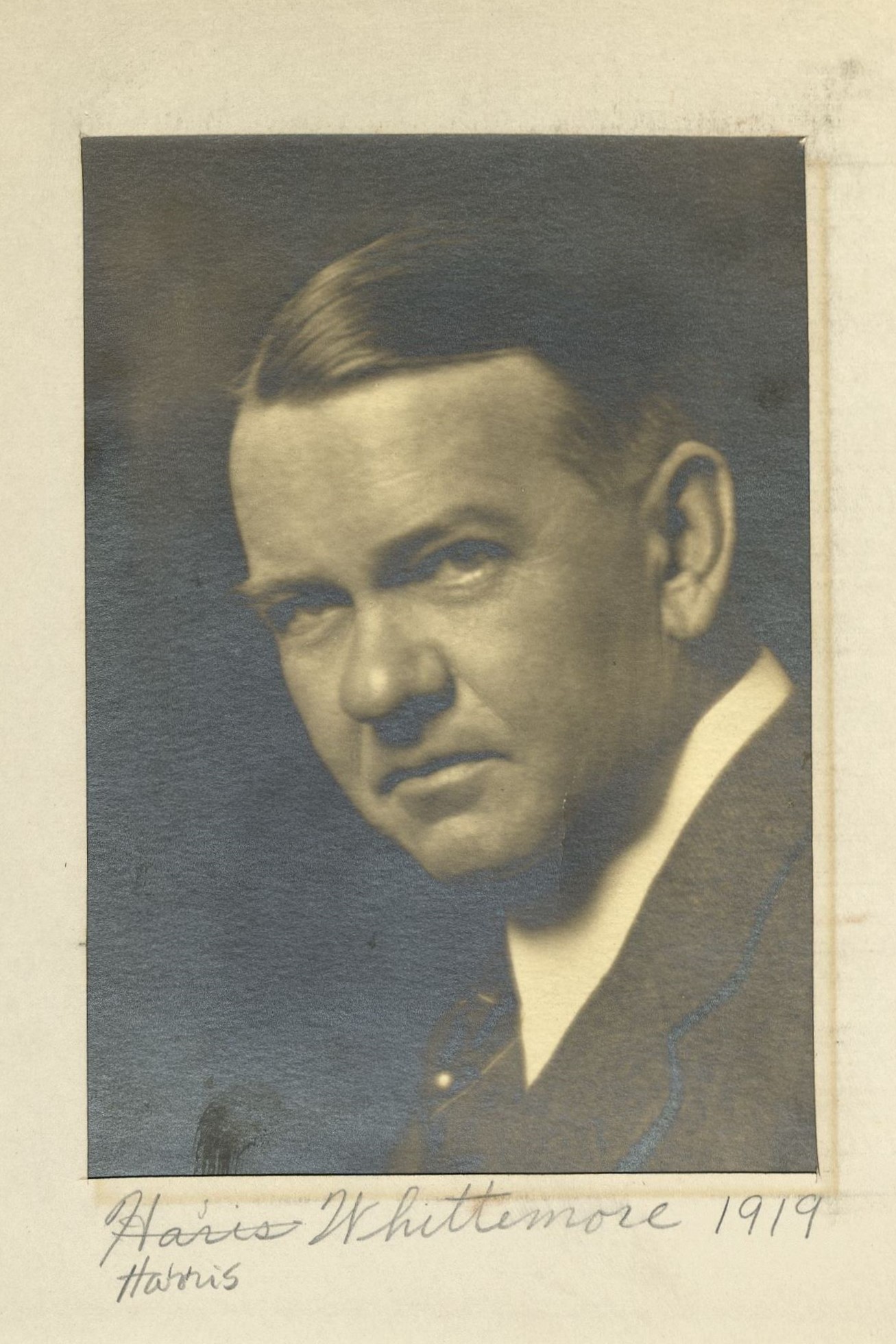Member Directory,
1847 - 1922
Henry Bacon
Architect
Centurion, 1907–1924
William Rutherford Mead and Daniel Chester French
Watseka, Illinois
New York (Manhattan), New York
Age forty
Wilmington, North Carolina

Century Memorial
A certain severity of restraint in his best architectural imaginings marked Henry Bacon’s quality. He could subordinate himself in the numerous pedestals which he designed for our greatest sculptors, but the classic appropriateness and beauty remained. In the American public mind, Bacon will be associated with the Lincoln Memorial, which stands at the Potomac end of what will some day be the most imposing public highway in all of the world’s great capitals, with the Grant Memorial of two other Centurions [Henry Merwin Shrady and Edward P. Casey] facing the Capitol at the further end. The history of this simple and stately structure, the designing of which was committed to Bacon in 1911, is in itself an interesting sidelight on American artistic and political history. The proposal for the Lincoln Memorial, twenty years ago, instantly called to life again the kind of Congressional patriotism whose mind was fixed on strictly utilitarian ideas in Washington art and architecture; which reproduced the frieze of the Parthenon on the Pension office by a procession of pictured puppet regiments with bayonets, and which recognized purely indigenous artistic merit by the statuary chamber of horrors in the Rotunda of the Capitol.
One Congressional group was for placing the Lincoln Memorial opposite the Union Station; another for capping Arlington Cemetery with the structure. How the second of these ideas, at the time apparently ensured of Congressional approval, was defeated by the artists’ advisory committee through their emphasis on the inappropriateness of building Lincoln’s memorial South of Mason and Dixon’s line—only to discover, after the Potomac site had been approved, that Mason and Dixon’s line was the Southern border of Pennsylvania, not the battlefront of the Army of Virginia, that the site of Bacon’s edifice was therefore well on the Confederate side, and that neither the artists nor the Congressmen had known it—is one of the well-known reminiscences of the Century’s artistic group. It was left for Bacon to design the Memorial building on its proper site, with the simplicity, symmetry and dignity which were characteristic of himself and appropriate to the man whom it commemorated.
Alexander Dana Noyes
1925 Century Association Yearbook
Related Members
Member Directory Home-
 Clarence Howard BlackallArchitectCenturion, 1912–1917
Clarence Howard BlackallArchitectCenturion, 1912–1917 -
 Charles W. CampAuthorCenturion, 1921–1936
Charles W. CampAuthorCenturion, 1921–1936 -
 William L. CarriganArtistCenturion, 1915–1939
William L. CarriganArtistCenturion, 1915–1939 -
 James Earle FraserSculptorCenturion, 1918–1953
James Earle FraserSculptorCenturion, 1918–1953 -
 Daniel Chester FrenchSculptorCenturion, 1894–1931
Daniel Chester FrenchSculptorCenturion, 1894–1931 -
 William Rutherford MeadArchitectCenturion, 1890–1928
William Rutherford MeadArchitectCenturion, 1890–1928 -
 Horace MoranInterior DecoratorCenturion, 1919–1941
Horace MoranInterior DecoratorCenturion, 1919–1941 -
 Harris WhittemoreManufacturerCenturion, 1919–1927
Harris WhittemoreManufacturerCenturion, 1919–1927





